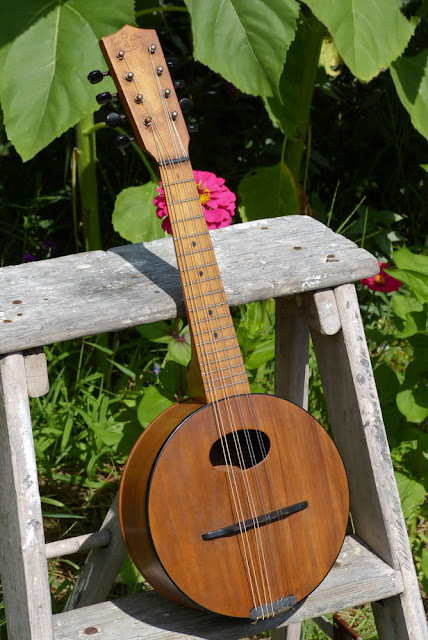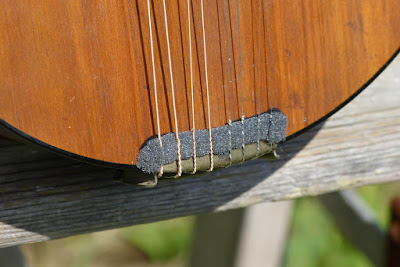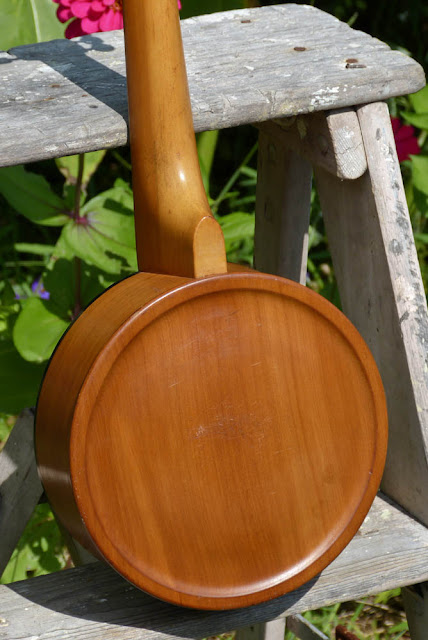1920s Lyon & Healy Camp Mandolin
Blog followers will be aware of Camp Ukes but probably aren't aware of the Camp Mandolin! It blew my mind when this came up in my email box about a year or so ago -- and recently the owner of it did a trade/money deal with me and I picked it up from her. It was in a pretty sad state -- lots of seam separations on the back, frets needing a level/dress, tuners needing lube, bridge needing seating, recutting, and compensation, and a number of tiny top hairline cracks needing attention.
The work is all done, however, and boy what a cute little thing this is! It's got fret access right to the 17th, a nice small body size (about the size of a larger soprano banjo uke -- 8" across the face), shorter 13 1/8" scale, and a sound that's like a mix of a bowlback, flatback, and DeWick weirdness. I can't help but enjoy it!
Like most other "Camp" products, this instrument is made entirely from nyssa (black gum/tupelo) wood. The back is a turned, thicker resonator plate mated to blocked, circular sides and the top is very thin and lightly arched over the bracing. Like most nyssa tops, however, the thin top is hairline-cracked all over but -- after cleating, filling, and sealing them -- it's good to go.
Ebony nut and original brass tuners. The neck is one-piece and the tiny/thin brass frets are set directly into the top of the neck rather than into a separate fretboard. This is classic for Camp Ukes -- and I guess for Camp Mandos, too.
The bridge came with an added "foot" which I took off. Then I fit it to the slightly-arched top and compensated it as best as I could after dialing-in the action height. The mando plays spot-on with regular 1/16" action at the 12th fret. I have it strung with 32w-9 "bowlback" or "extra light" mando gauges because of the light construction -- and the fact that those were common gauges at the time.
The tailpiece cover is missing so I used a bit of foam to mute the afterlength overtones.
All the hardware is original on this instrument.
I love the look of the turned "resonator backplates" on Camp instruments. It's a very cool idea and certainly works in that it gives these instruments projection beyond their size.
The top edge is bound in black celluloid.
A simple uke gigbag comes with this -- but I'll bet one of those 8" banjo uke hard cases would fit this perfectly, if desired.


















Comments